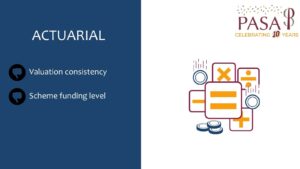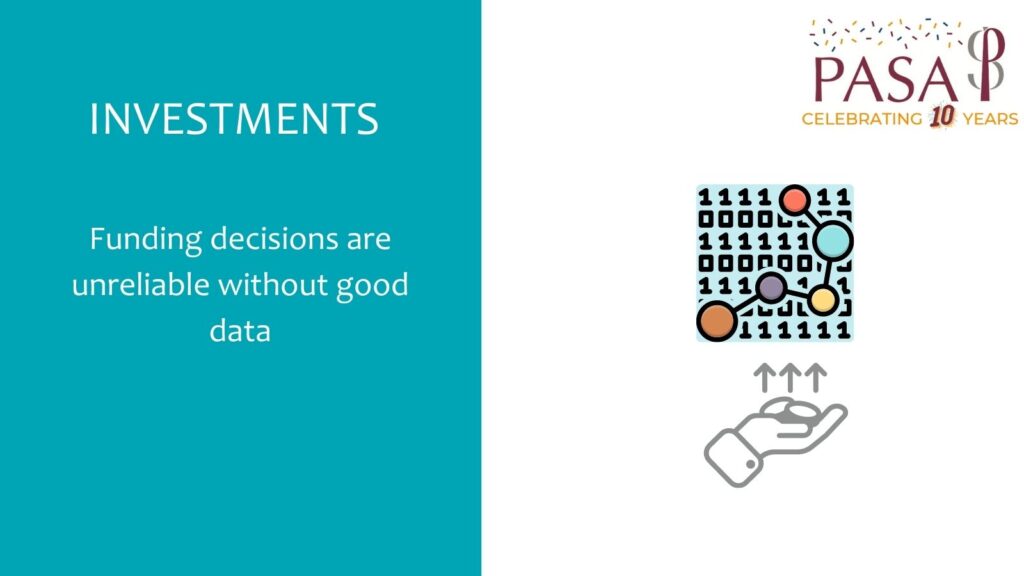Data is central to the success of well-run Pension Schemes and their strategic plans and goals. Without good data, schemes waste time and money, increase risks of errors and often provide their members with a below par service.
Schemes often invest heavily in new automated systems, advanced member communications and/or legal and actuarial support for de-risking exercises, with data as a secondary focus. For most initiatives to be successful, the industry requires a much greater emphasis on data.
Data for administration
A Scheme’s primary purpose is to pay the right members the right benefits at the right time, and data is key to achieving this. Pension scheme administrators rely heavily on data to run pension schemes efficiently, with accurate and consistently stored data being critical to the automation of pension calculations, bulk reporting, and communications.
Efficiency
Good quality data is essential to efficient administration, and with pressures on the industry for scheme running costs to be minimised, having good data is key to realising efficiencies.
All pension schemes want their administration to be carried out in an efficient way. However, there are a number of data barriers which can restrict this. These include; multiple systems with inconsistent data; data held in archives and data held on micro-fiche or image/paper files and not stored electronically. Manual data gathering, checks and calculations are frequently required in these circumstances, which drives up the cost for pension administration.
Missing or inaccurate data often leads to administration complexities, backlogs and delays for members, which will not be supporting a good member experience.
Automation
To be more efficient, many Schemes and their providers in the industry have looked towards automated calculation processes to alleviate the pressure on their teams, reduce the risk of error, and open up opportunities for member self-service.
These are considered to be important steps for schemes with large volumes of member event turnover and is a direction shifting many schemes in the industry into the 21st century. However, there are risks when removing the ‘human’ element of important processes. Providers need to be much more confident in the accuracy of their data and consistency of how the data is held, as accurate data provides the core foundation for high levels of automation.
Good quality data is a critical building block for the success of automated calculations. It is essential if high levels of automation are desired.
Member experience
Schemes and their providers exist for their members. Ensuring a positive experience for members with their pension provider can have a big impact on the way pensions are viewed and trusted. The presence of accurate data will support a Scheme in allowing it to communicate more efficiently and to provide members with a good experience and simple access to their pension information. The development of the Pensions Dashboard is really driving the focus on member experience and how critical data is for this.
Accuracy
It is essential the data used for pensions administration is accurate – from the basics like address details, to the more complex data items such as service periods, salary definitions and special features. This is especially important when calculating benefits at retirement, where inaccuracies can have a financial impact on members. Proof of life checks and regular mortality screening can also help protect both the member’s beneficiary and the provider from financial fraud and prevent pension overpayments.
As set out by the Pensions Regulator in their record keeping guidance, taking steps to ensure pension scheme data is accurate is a key governance step for trustees. Trustees are required to review their scheme data regularly and include details of their scheme data quality as part of their scheme return.
Data for actuarial purposes
For Schemes to accurately assess their liabilities the underlying data needs to be correct and complete. Typically, actuarial valuations are produced using standardised system data extracts. If data is missing or incorrect, the actuary will make a number of assumptions resulting in a less accurate valuation of liabilities.
Consistency of actuarial valuations
It is important data is of high quality to support consistency between actuarial valuations. The fewer assumptions which need to be made the fewer changes there are likely to be when the same “data” is used in subsequent calculations. Having consistency in the data and the approach to assumptions supports sponsors in understanding how much they are likely to need to pay towards, for example, deficit funding contributions. This enables companies to have more clarity on available discretionary project spend in relation to their scheme.
Scheme funding levels
Actuaries use their scheme’s member data to inform funding levels. The objective is for those funding levels to be as accurate as possible to avoid under or over-funding for liabilities. Where accurate data is unavailable, they will need to err on the side of caution. For example, without accurate marital status data actuaries will make assumptions about spouse benefits and age profiles which could result in overestimating liabilities.
Data for communications
Most schemes and their providers still rely heavily on letters to communicate with their members – even many of the newer master trusts. This means up-to-date addresses are crucial. However, with over 10% of the population moving home each year it is easy to lose track. Many schemes have a significant number of ‘gone away’ members, and each time they communicate to members, the number of missing addresses is likely to increase.
Gathering and storing additional data like email addresses and mobile telephone numbers can help schemes keep track of their members and provides them with alternative efficient methods of communication. Regular existence and address verification exercises will also support successful communication exercises.
Data is also important to enable Trustees to deliver the right messages to the right groups of people. For example, sending additional warnings about pension scams to those members who fall into higher risk categories because of their age.
Data for investments
As more defined benefit schemes adopt a liability driven investment model, data quality is becoming increasingly important. Decisions around funding are based on a scheme’s calculated liabilities. Those liabilities are calculated using scheme data, and if this is unreliable, funding decisions could be incorrect.
Accurate data is also essential for defined contribution scheme investments – particularly where glidepath/lifestyle strategies are used. Schemes should not under-estimate the time and cost involved in correcting the position if this process goes wrong.
Data for risk transfer exercises
Many schemes are considering a risk transfer like a buy-in or buy-out in the future. When pension risk transfer providers (PRT) assess a scheme, the accuracy of liabilities comes under significant scrutiny. PRT providers will apply a data risk premium if the underlying data is deemed to be insufficient to calculate liabilities accurately – after all, providers need to ensure they are fully aware of the benefits they may be taking on.
This can cost a scheme greatly – with industry experts assessing the data risk to be in the region of 1-5% of the total premium. This can make the difference between a transaction being affordable or not.
Missing data such as marital status and contingent spouse details can make a big difference, but as a provider’s legal and actuarial advisers look closely at the scheme, other issues such as benefit inaccuracies will come to light. It is always better for schemes to focus some time and money up front to identify and resolve their data issues before they have a more significant impact on the scheme’s long-term objectives. For the vast majority of schemes, reviewing and improving data will cost far less than the data risk premium applied if the data work is not carried out.
Data for digitalisation
Pension Schemes are gradually moving towards self-service and digital solutions. This enhances member engagement, particularly with younger generations of members and members approaching retirement who need access to adequate information to make informed choices. Self-service also enables straight through processing for actions such as retirement claims and member updates.
Data needs to be accurate enough for matching and verification, especially where retirement claims may be paid without any human oversight.
Preparing for pensions dashboards is a huge challenge for schemes, one where their data and its accessibility is central to success.
Conclusion
Data underpins all areas of pension scheme management and ultimately drives the outcomes for members – without good quality data, pensions schemes will face challenges in meeting their regulatory duties and providing members the right benefits at the right time, the ultimate objective. Data may appear to be focused at the administration function, but it impacts all areas of pension scheme management and poor quality data will restrict the effectiveness across all areas. We can all see the benefits of investment in the processes in place to run a pension scheme, with investment in automation, or asset management common practices. But investment on the quality of data is often left behind, when it could be argued it’s the most important step.







